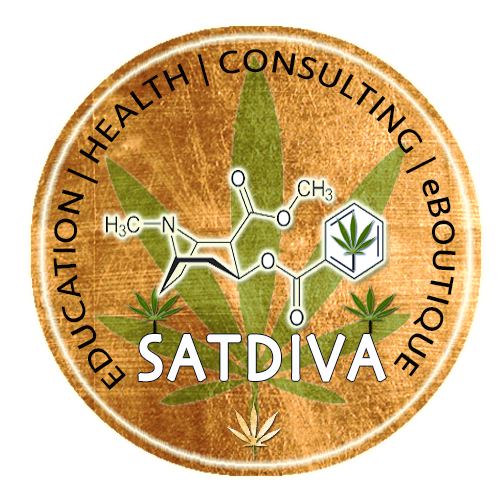
Resolution In Support Of The De-Scheduling Of Cannabis
Cannabis is a natural non-toxic plant that is biologically synergistic with human health and wellness:
Whereas, Cannabis has been used as a food source and an herbal medicine for thousands of years throughout the world; and,
Whereas, Cannabis in its natural form has a remarkably wide margin of safety and there have been no recorded overdose deaths by cannabis throughout centuries of human use; and,
Whereas, Cannabis in its fresh and natural form is not psychoactive, but rather a nutritious food source; and,
Whereas, Cannabis has a low risk of addiction with minor withdrawal symptomology and, in fact, can be utilized in opioid harm reduction; and,
Whereas, Cannabis was inappropriately omitted from the U.S. Pharmacopoeia in 1941 based on the reefer madness campaign that led to the passage of the Marihuana Tax Act of 1937 (Bonnie and Whitebread, 1974) that demonized the plant as a dangerous new drug; and,
Whereas, the United States Government had incorrectly and arbitrarily placed cannabis into Schedule 1 (forbidden category) of the controlled substances under the Controlled Substances Act of 1970 based on old myths and political ideology; and,
Whereas, in 1972 the “Shafer Commission” (The National Commission on Marihuana and Drug Abuse) found that marihuana (cannabis) did not meet the criteria for Schedule I placement; and,
Whereas, in a petition to Drug Enforcement Administration (DEA) to remove cannabis from Schedule I, the DEA’s own Administrative Law Judge, Francis Young ruled that cannabis did not belong in Schedule I, but the Director of the DEA rejected Judge Young’s ruling1 (Washington, DC U.S. Department of Justice, 1988); and,
Whereas, the primary psychoactive substance in Cannabis is THC and the pharmaceutical product, dronabinol (synthetic THC in Sesame oil) was down-regulated from Schedule 2 to Schedule 3 of the controlled substances due to its safety and lack of diversion, and per the DEA’s own rules, a plant should not be more restricted than its primary psychoactive constituent; and,
Whereas, the American Herbal Pharmacopoeia published a monograph, Cannabis Inflorescence, which provides quality and safety standards for this herbal plant (AHP, 2013); and
Whereas, the public has been allowed to grow and use herbal plants without a prescription; and,
Whereas, 8 states (AK, CA, CO, MA, ME, NV, OR, and WA) and Washington, DC allow use of cannabis by adults, causing much confusion between state and federal laws; and,
Whereas, the prohibition of cannabis has resulted in cruel punishment to countless individuals for simply growing the plant or possessing its harvested flowers; and,
Whereas, the prohibition of this plant has diverted our law enforcement and their resources away from violent criminals and true criminal activities; and,
Whereas, due to the cannabis prohibition numerous non-violent individuals have been imprisoned, resulting not only in destroying their lives, but adding pain and suffering to their loved ones in their absence; and,
Whereas, the cannabis plant is highly beneficial to our environment when allowed to grow naturally (Clark & Pate, 1997); and
Whereas, cannabis may be an essential nutrient for those suffering from health problems caused by an endocannabinoid deficiency (Russo, 2016); and,
Whereas, this resolution is not addressing pharmaceutical alterations of concentrates, or extractions of specific cannabinoids, or the synthesis of any of the active constituents of cannabis;
Therefore be it resolved that PATIENTS OUT OF TIME will:
1. Promote the nutritional and healing value of this herbal plant.
2. Educate its members and the public about the safe cultivation, storage, and use of herbal cannabis.
3. Support the end of the cannabis prohibition.
4. Encourage its members to use this resolution to petition their state legislators and the federal government to end the cannabis prohibition.
5. Urge the DEA to de-schedule Cannabis and end the prohibition on this highly beneficial plant.
6. Support pesticide- and herbicide-free cultivation of this plant by commercial growers.
7. Support the immediate release of those convicted of marijuana growing, possessing, or consuming charges.
References:
American Herbal Pharmacopoeia. (2013). Cannabis Inflorsence. ScottsValley, CA: American Herbal Pharmacopoeia.
Bonnie RJ & Whitebread, II, CH (1974). The Marihuana Conviction: A History of the Marihuana Prohibition in the United States. Charlottesville: University Press of Virginia.
Clarke RC & Pate DW. (1997). Economic and environmental potential of cannabis (pp. 192-211), in Cannabis in Medical Practice; A Legal, Historical and Pharmacological Overview of the Therapeutic Use of Marijuana, edited by ML Mathre. Jefferson, NC: McFarland & Company, Inc.
National Commission on Marihuana and Drug Abuse. (1972). Marihuana: A Signal of Misunderstanding. Washington, DC: National Academy Press.
Russo EB. (2016). Clinical endocannabinoid deficiency Reconsidered: Current research supports the theory in migraine, fibromyalgia, irritable bowel, and other treatment-resistant syndromes. Cannabis and Cannabinoid Research. 1(1):154-165. DOI:10.1089/can.2016.0009.
Washington, DC, U.S. Department of Justice, Drug Enforcement Administration. (September 6, 1988). In the matter of marijuana rescheduling petition, Dkt. No. 86-22, opinion, recommended ruling, findings of fact, conclusion of law, and decision of administrative law judge.
Approved:
In December 2016, Patients Out of Time submitted a petition to the White House urging immediate de-scheduling.
Follow Us
Share This




